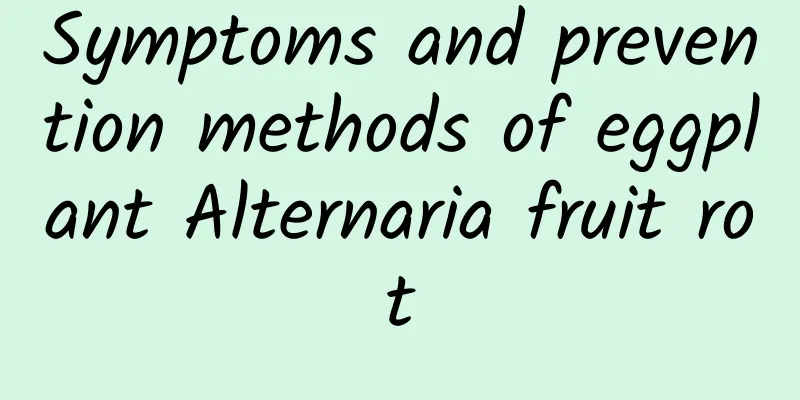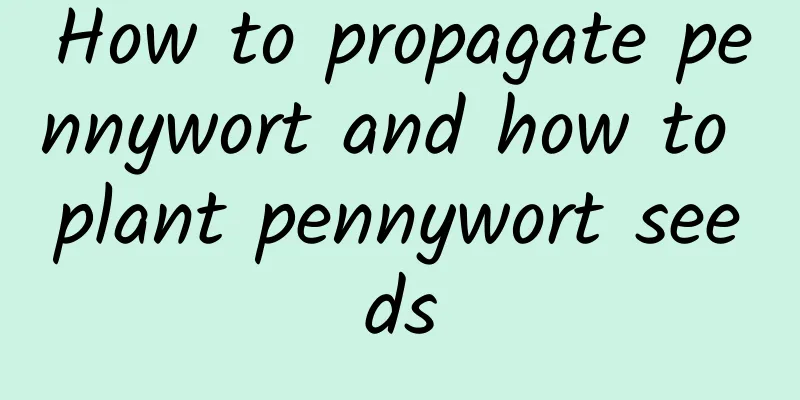Symptoms and prevention methods of eggplant Alternaria fruit rot

|
Today I will introduce to you the eggplant Alternaria fruit rot and how to prevent and control it? Symptoms of eggplant Alternaria fruit rot:The main harm is to fruits, both green and ripe fruits can be affected, but ripe fruits are more likely to be affected. The pathogen mainly attacks the sunburned areas on the surface of the fruit or the cracks on the fruit, causing the affected areas of the infected fruit to turn brown. As the disease progresses, the lesions become hard and sunken, and then turn into black spots, gradually growing a short, velvety black mold layer, which is the conidiophores and conidia of the pathogen. Morphological characteristics of the pathogen:Conidiophores are clustered, dark brown, short and thick, or irregularly club-shaped, with 2 to 9 septa, (27.5 to 110) × (2.75 to 4.5) microns in size, with conidia at the top; conidia are obraculate or cylindrical, light yellow, 9.5 to 40 × 5 to 11.25 microns in size, with 1 to 6 longitudinal septa, mostly 3 to 4; 1 to 5 transverse septa, mostly 3. With a short beak, only half the length of the spore body, the beak is mostly without septa, a few have 1 to 2 septa, and are colorless. Infection pathway: The pathogen overwinters in the soil with the diseased remains, produces conidia the following year, and spreads by wind and rain. The spores invade through wounds, and the disease is usually more likely to occur in high humidity, rainy weather, or dewy conditions. Causes of disease:1. The planting density is high, ventilation and light are poor, the disease is severe, too much nitrogen fertilizer is applied, the plant grows too tenderly, and its resistance is reduced, making it easy to get sick. 2. The soil is heavy and acidic; there are many diseased and residual plants in the field due to repeated cropping for many years; too much nitrogen fertilizer is applied, causing the plants to grow too tenderly; the fields are insufficiently fertile, the farming is extensive, and weeds are rampant, resulting in reduced plant resistance and severe disease. 3. Seeds are contaminated with bacteria, fertilizers are not fully decomposed, organic fertilizers are contaminated with bacteria, or fertilizers are mixed with diseased residues of crops of this family, which are prone to disease. 4. Low-lying terrain with accumulated water, poor drainage, and moist soil are prone to disease. High temperature, high humidity, heavy rain, fog, heavy dew, and insufficient sunshine are also prone to disease. 5. Greenhouse cultivation often does not allow ventilation or moisture removal in order to keep warm, which can cause excessive humidity and lead to diseases. 6. Pruning on rainy days or in the early morning when the dew has not dried, or when there are many insect wounds, pathogens will invade through the wounds and the disease will be more likely to occur. Eggplant Alternaria fruit rot prevention and control methods:1. Agricultural prevention and control:1 Before sowing or transplanting, or after harvesting, remove weeds in and around the field, burn them or compost them; deep plow the land to kill the stubble, promote the decomposition of diseased and residual plants, and reduce pathogens and insects. 2. For non-undergraduate crop rotation, water-land rotation is best. 3. Choose disease-resistant varieties and disease-free, coated seeds. If not coated, the seeds must be sterilized with a seed dressing or soaking agent. 4. Choose fields with convenient drainage and irrigation, dig drainage ditches, lower the groundwater level, and ensure that there is no water accumulation after the rain stops; clean the ditches in time after heavy rain to prevent moisture retention and reduce field humidity. This is an important measure to prevent diseases. 5. For seedling transplanting, sterile soil should be used as the nutrient soil for seedling cultivation and it should be exposed to the sun for more than three weeks before use. Sprinkle a thin layer of medicated soil on the bottom of the seedbed and cover it with medicated soil after sowing. Spray an insecticide and disinfectant once before transplanting, which is the key to disease prevention. 6. For fields with many soil pathogens or serious underground pests, spread or apply sterilized and insecticidal soil in the furrows before sowing. 7. Apply compost fermented with enzyme bacteria or decomposed organic fertilizer. Do not use fertilizer with bacteria. The organic fertilizer used must not contain diseased plant residues. 8. Adopt soil testing and formula fertilization technology, appropriately increase the application of phosphorus and potassium fertilizers, strengthen field management, cultivate strong seedlings, enhance plant disease resistance, and help reduce diseases. 9. Covering the soil with film can prevent soil pathogens from harming the above-ground plants. 10 Avoid pruning in rainy weather; prevent and control pests in a timely manner to reduce plant wounds and reduce the transmission of pathogens; take timely prevention and control when the disease occurs, and remove diseased leaves and plants, take them out of the field and burn them, and apply pesticides or quicklime to the diseased holes. 11. During the summer leisure period, greenhouse cultivation can be done by watering the greenhouse, covering the ground with mulch, closing the greenhouse for a few days, and using high temperature for sterilization; 12 Scientific irrigation should be carried out during high temperature and drought to increase field humidity and reduce the damage and virus transmission of aphids and gray leafhoppers. Continuous irrigation and flooding are strictly prohibited. Preventing water droplets from splashing when watering is an important measure to prevent the disease. 2. Chemical control:75% Thiophanate-methyl WP 600 times diluted 58% Metalaxyl•Mancozeb WP 500 times diluted 64% antiseptic alum wettable powder 400 times diluted 50% chlorhexidine wettable powder 1000-1500 times dilution 70% phosphine•manganese zinc wettable powder 500 times diluted Spray at the early stage of the disease, stop using thiophanate-methyl 7 days before harvest, and stop using the remaining drugs 3 days before harvest. |
<<: Fried eggplant pancakes steps
>>: Eggplant pancake recipe steps
Recommend
Can fennel root be eaten? The effects and functions of fennel root
Fennel is a green vegetable that everyone has eat...
How to eat mustard tuber and shredded pork soup?
Pickled mustard tuber is a dish that goes well wi...
What are the benefits of drinking wine?
Drinking red wine is a hobby of many people with ...
What are the benefits of eating cherry tomatoes?
What are the benefits of eating cherry tomatoes? ...
The efficacy and function of persimmon branches
Persimmon branches are tender branches collected ...
Field management of loofah
How to plant and manage loofah so that it can gro...
The efficacy and function of Podocarpus chinensis fruit
Podocarpus is one of the most popular potted plan...
The effects and functions of eating litchi kernels
Lychee is a delicious fruit that everyone has eat...
What is the Swedish Bar Association like? Swedish Bar Association reviews and website information
What is the Swedish Bar Association website? The S...
What is Cali America Football Club like? Cali America Football Club reviews and website information
What is the website of the American Football Club ...
How is Kahua.com? Kahua.com review and website information
What is Cn Qatar? Cn Qatar is the largest Chinese ...
Therapeutic and health benefits of common vegetable juices
Nowadays, people like to drink some fresh vegetab...
How is The Ladders? The Ladders review and website information
What is The Ladders? The Ladders is a well-known j...
What is Bennington College like? Bennington College reviews and website information
What is Bennington College? Bennington College is ...
Cultivation method of potted honeysuckle
Honeysuckle is an evergreen vine plant that bloom...









